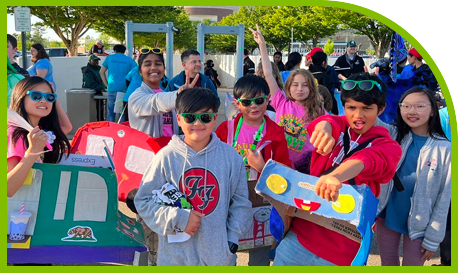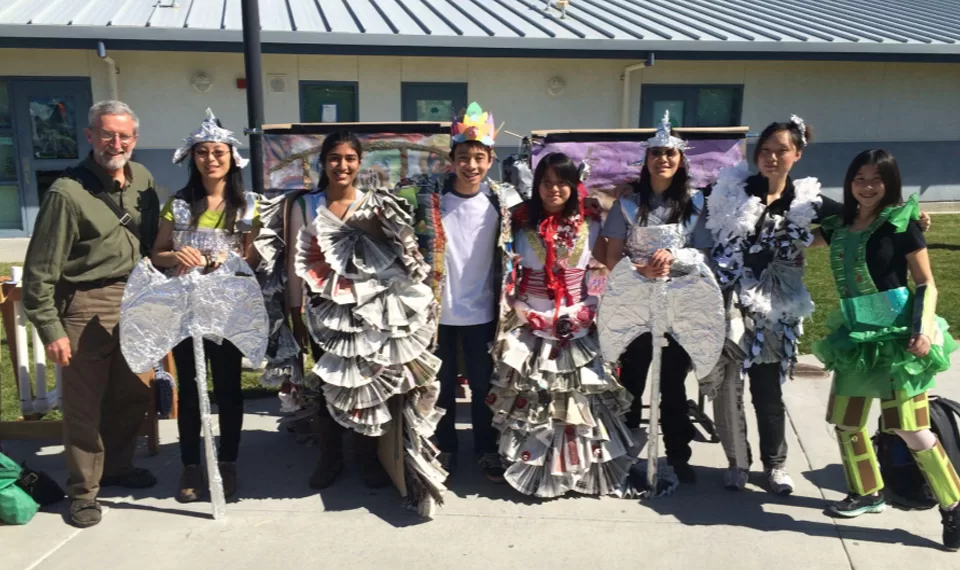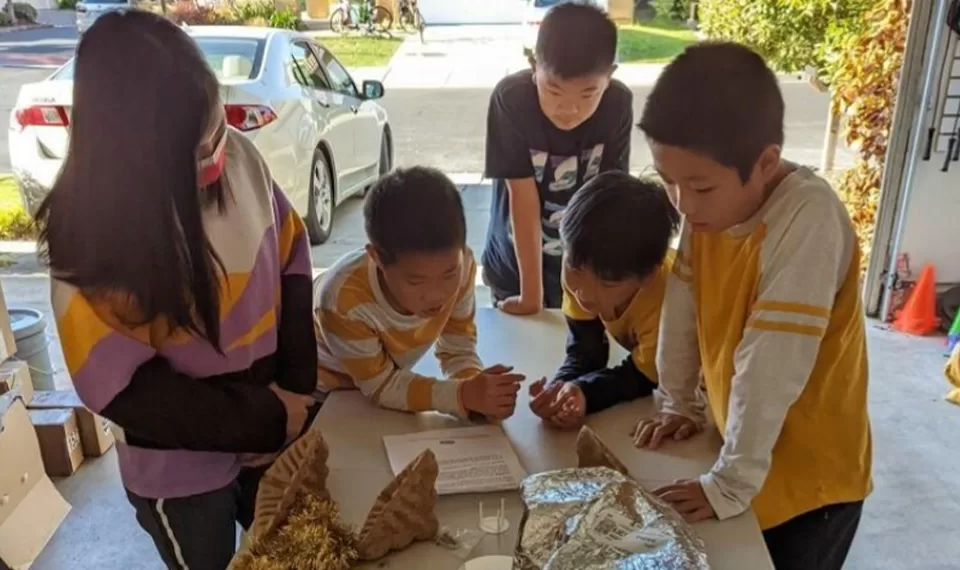Odyssey of the Mind (OM) is a team-based creativity and STEM/STEAM program in which groups of 3 to 7 students solve one of several problems put out each year by the OM organization. The problems are open-ended and designed so that there is no “right” answer. This teaches participants the power of divergent thinking — in class, convergent thinking is used to arrive at the right answer; in Odyssey, divergent thinking is used to arrive at infinite solutions.
Students of all ages, from kindergarten through college, can participate in Odyssey of the Mind. Teams are classified into one of five OM divisions:
Primary (K–2)
Division 1 (K–5, but usually 3–5)
Division 2 (6–8)
Division 3: high school
Division 4: college
The division in which a team participates is determined by the age of the oldest member of the team.
Every year the national organization releases five long-term problems and one primary problem toward the end of August. The five long-term problems are scored, while the primary problem, available for grades K-2 is more open. Primary teams perform but are not scored at competition. The five scored problems are:
- Problem One: Vehicle – Teams use unusual sources of energy and original engineering to create vehicles according to the problem rules.
- Probelm Two: Technical – Teams create technical devices that perform a specified task.
- Problem Three: Classics – Teams write and perform original theatrical performances based on a work from classical literature, artwork, music, culture, or history.
- Problem Four: Structure – Teams create an original structure out of balsa wook to withstand a new test of strength as it holds weight until it breaks.
- Problem Five: Performance – Teams integrate stage and drama elements from lighting effects to puppetry to elaborate set changes to tell a performative story.
Teams solve their long-term problem over a series of weeks or months and present their solution, if they choose to, at a competition in early spring.
The first step to participating in OM is to purchase a national membership here. Teams must then purchase a NorCal Association membership, which can be done here.
The process of forming teams can be a challenging part of OM. Teams must have a coach and between 3 and 7 members. The team is categorized based on the age of the oldest member; for instance, if one third grader is on a team with five second graders, the team is in Division 1.
Coaches are usually parents of one or more team members. They can also be teachers, volunteers from the community, or members of sponsoring organizations such as Rotary.
Teams are self-formed. The coach can invite children to join the team or can work with a “core group” to identify others based on friendships, compatibility, or diversity of skills. All OM problems involve creative thinking, hands-on construction or manipulation of materials, public speaking, performance, and organization. If a particular talent is missing from the core team, look for new members who can fill that need.
Alternatively, teams can use sign-up sheets. After an informational meeting for parents and students, potential members interested in OM can add their names to a general interest list or ask to join a specific team. Flyers useful for promoting OM are provided later in this packet.
Being an Odyssey coach is not unlike coaching a sports team. The OM team meets about once per week for an hour or two and more often and for longer work sessions as competitions approach. After the start-up period during which the coach learns what Odyssey is and how it works, the time commitment is for the meetings, attending a coaches’ training session early in the year (October or November), filling out forms and registering the team for tournament, handling money the parents contribute for materials and fees, and getting the team to the tournament(s). An average of 5 hours per week is about right for about 4 or 5 months.
During each academic year, teams work on their own unique solutions to problems. Six types of problems are created each year: primary, vehicle, technical, classics, structure, and performance. There are five problems for Division 1-4 teams and one problem for primary teams. Short videos about this year’s problems are on the OM website.
Solutions are presented at one of two Qualifying Tournaments in February. The primary team presentations are noncompetitive. Members receive feedback but are not scored or ranked. The Division 1, 2, 3, and 4 teams are judged. Teams whose solutions are ranked first, second, and third in each problem advance to a state tournament in March. The top teams from the state tournament advance to the World Finals in May.
There is no fee to participate in the State Association Tournament. The tournament is included in the purchase of the team’s State Membership. No additional cost.
The fees pay for everything including the tournament sites, spontaneous supplies, all other supplies (paper, toner, clipboards, signs, pens, sticky notes, etc.), food for the judges, storage site fees to store equipment in the offseason, rental truck to move equipment to and from tournaments and any unexpected expenses. Reminder: Everyone on the Board are volunteers and DO NOT get paid to run the program.
The NorCal Association currently hosts two qualifying tournaments (QT). As the association grows, additional qualifying tournaments may be added.
Teams can choose which date and location works best for the team. Choice of QT is based on availability, so if your team is planning to participate, make sure to register early! Registration generally opens at the end of November or beginning of December.
The qualifying tournaments will be located in different locations on different days to give teams options. Each qualifying tournament will have limited space so sign ups will be first come first serve once sign ups are opened.
A team must attend one qualifying tournament to advance to the state tournament.
Spontaneous problems are problems that a team must solve within a few minutes. At each tournament, teams go alone into a “spont room” where judges challenge them with a spontaneous problem. The team will not know the problem ahead of time.
All team members participate in solving this problem within a time limit. The creativity of their solution and how well the team members work together are key elements in their spont score.
It is important for teams to practice spontaneous problems at each of their meetings because they make up a sizable portion of the team’s final score.
Odyssey has strict rules about team members coming up with solutions on their own. They should not receive “outside assistance” in the form of parents doing tasks for them or telling them what to do, coaches crossing the line from coaching to doing, or other students suggesting ideas.
Only team members may contribute to the problem solution. If a team wants to do something but does not know how, such as sewing a costume, team members may ask for someone to teach them how to sew. It is OA if someone else sews the costume, or suggests to the team that something be sewn, or to give a lesson on sewing while the team is trying to join materials together. Also, if the team has more than seven members contributing to the solution, that additional person’s work counts as Outside Assistance.
All team members — up to seven — have the opportunity to participate in spontaneous. They will work as a team.
We encourage all team members to go into Spontaneous but if a member is unable to enter they do not have to go into the room.
An entire school can participate in Odyssey of the Mind for $290. This membership fee covers 5 to 15 teams, including an unlimited number of Primary (K-2) teams. There is a modest NorCal membership fee of $80 and a registration fee of $85 to participate in Association tournaments.
Beyond these set fees, costs are variable. Each problem has a cost limit, which is generally $150 or less. Teams may not exceed that limit. Costs for things like travel and refreshments should also be considered.




